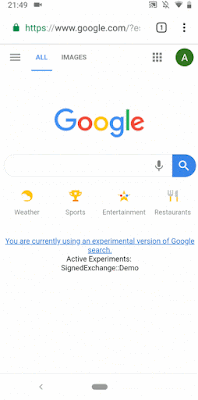Today we want to walk through some updated analysis on the benefit that prerendering can provide on load times. AMP is designed to reduce page load time, and one of the most important ways Google Search reduces page load time is through privacy-preserving-prerendering AMP documents before a link is clicked.
First Viewport Ready
The AMP framework has been designed to understand the layout of all page content and the loading status of all resources, so it can determine the time when all "above the fold" content has loaded. It also knows when the document is prerendered and when it is displayed. Thus, the AMP framework can compute the time from click until the above the fold content is displayed. AMP measures page load speed with a custom metric called First Viewport Ready (FVR). This is defined as the point in time "when non-ad resources above the fold fired their load event measured from the time the user clicks (So takes pre-rendering into account)". If an AMP document is fully prerendered this metric will be 0. If prerendering was not complete at the time of click or if the document was not prerendered at all, then the metric will be greater than 0.
Google Search prerenders some AMP documents and not others so we are able to see the impact that prerendering has on FVR. The chart below shows percentiles for FVR with and without prerendering. FVR is 0 when the AMP framework successfully completes prerendering before the document is displayed.
First Contentful Paint
First Contentful Paint (FCP) is a page load speed metric that is measured by the browser. It is available for all documents, not just AMP documents. FCP is the point in time when the first bit of content from the DOM is rendered. A high value for FCP indicates that a page is definitely slow, but a low value for FCP does not necessarily mean that a page loads quickly since the first bit may not be important content. This is useful, but since AMP has a better understanding of what content is visible, FVR gives a better understanding of when content becomes visible.
FCP is not aware of prerendering so AMP computes a prerender sensitive derivative metric, Prerender-adjusted First Contentful Paint (PFCP), that subtracts out the time before click. When not prerendered, PFCP = FCP. FCP also decreases with prerendering, but the difference is less dramatic than FVR.
It may be surprising that median prerendered PFCP is higher than median prerendered FVR. This happens because the browser has to draw the content to the screen after the click. PFCP includes that time, while FVR does not.
Conclusion
Prerendering AMP documents leads to substantial improvements in page load times. Page load time can be measured in different ways, but they consistently show that prerendering lets users see the content they want faster. For now, only AMP can provide the privacy preserving prerendering needed for this speed benefit. In the future, new web platform features, such as Signed Exchanges, will bring privacy-preserving instant loading to non-AMP documents too.
 Posted By Eric Steinlauf, Software Engineer, Google
Posted By Eric Steinlauf, Software Engineer, Google 







